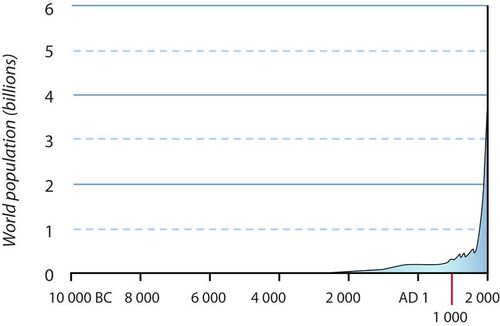
Is this any way to live?
It is if you're a penguin. This population of penguins is made of all the individuals of the same species of penguins who live together. They seem to exist in a very crowded - or densely populated - environment, and in a random configuration.
Communities are made up of populations of different species. In biology, a population is a group of organisms of the same species that live in the same area. The population is impacted by natural selection and evolution. How large a population is and how fast it is growing are often used as measures of its health.
Population size is the number of individuals in a population. For example, a population of insects might consist of 100 individual insects, or many more. Population size influences the chances of a species surviving or going extinct. Generally, very small populations are at greatest risk of extinction. However, the size of a population may be less important than its density.
https://youtu.be/CWhwHgkk73U
Population Density
Population density is the average number of individuals in a population per unit of area or volume. For example, a population of 100 insects that live in an area of 100 square meters has a density of 1 insect per square meter. If the same population lives in an area of only 1 square meter, what is its density? Which population is more crowded? How might crowding affect the health of a population?
Population Distribution
Population density just represents the average number of individuals per unit of area or volume. Often, individuals in a population are not spread out evenly. Instead, they may live in clumps or some other pattern (see Figure below). The pattern may reflect characteristics of the species or its environment. Population distribution describes how the individuals are distributed, or spread throughout their habitat.
6.18
Population Structure

Young vs. old. Does it matter?
When it comes to populations, yes it does. The age structure (and the sex structure) of a population influences population growth. Can you explain why?
Population Structure
Population growth is the change in the size of the population over time. An important factor in population growth is age-sex structure. This is the number of individuals of each sex and age in the population. The age-sex structure influences population growth. This is because younger people are more likely to reproduce, while older people have higher rates of dying.
Population Pyramids
Age-sex structure is represented by a population pyramid. This is a bar graph, like the one Figure below. In this example, the bars become narrower from younger to older ages. Can you explain why?

A population pyramid represents the age-sex structure of a population. What does a large base represent?
Survivorship Curves
Another way to show how deaths affect populations is with survivorship curves. These are graphs that represent the number of individuals still alive at each age. Examples are shown in Figure below.

Survivorship curves reflect death rates at different ages.
The three types of curves shown in the figure actually represent different strategies species use to adapt to their environment:
- Type I: Parents produce relatively few offspring and provide them with a lot of care. As a result, most of the offspring survive to adulthood so they can reproduce. This pattern is typical of large animals, including humans.
- Type II: Parents produce moderate numbers of offspring and provide some parental care. Deaths occur more uniformly throughout life. This pattern occurs in some birds and many asexual species.
- Type III: Parents produce many offspring but provide them with little or no care. As a result, relatively few offspring survive to adulthood. This pattern is typical of plants, invertebrates, and many species of fish.
The Type I strategy occurs more often in stable environments. The Type III strategy is more likely in unstable environments. Can you explain why?
https://youtu.be/RLmKfXwWQtE
Summary
- The age-sex structure of a population is the number of individuals of each sex and age in the population.
- Age-sex structure influences population growth. It is represented by a population pyramid.
- The number of survivors at each age is plotted on a survivorship curve.
Review
- How does the age-sex structure of a population influence growth?
- Assume that a population pyramid has a very broad base. What does that tell you about the population it represents?
- Compare and contrast Type I and Type III survivorship curves.

What would old luggage have to do with population growth?
Moving into an area, or immigration, is a key factor in the growth of populations. Shown above is actual vintage luggage left by some of the millions of immigrants who came through Ellis Island and into the United States.
Population Growth
Populations gain individuals through births and immigration. They lose individuals through deaths and emigration. These factors together determine how fast a population grows.
Population Growth Rate
Population growth rate (r) is how fast a population changes in size over time. A positive growth rate means a population is increasing. A negative growth rate means it is decreasing. The two main factors affecting population growth are the birth rate (b) and death rate (d). Population growth may also be affected by people coming into the population from somewhere else (immigration, i) or leaving the population for another area (emigration, e). The formula for population growth takes all these factors into account.
r = (b + i) - (d + e)
- r = population growth rate
- b = birth rate
- i = immigration rate
- d = death rate
- e = emigration rate
Dispersal
Other types of movements may also affect population size and growth. For example, many species have some means of dispersal. This refers to offspring moving away from their parents. This prevents the offspring from competing with the parents for resources such as light or water. For example, dandelion seeds have “parachutes.” They allow the wind to carry the seeds far from the parents (see Figure below).

Dandelion Seeds. These dandelion seeds may disperse far from the parent plant. Why might this be beneficial to both parents and offspring?
Migration is another type of movement that changes population size. Migration is the regular movement of individuals or populations each year during certain seasons. The purpose of migration usually is to find food, mates, or other resources. For example, many northern hemisphere birds migrate thousands of miles south each fall. They go to areas where the weather is warmer and more resources are available (see Figure below). Then they return north in the spring to nest. Some animals, such as elk, migrate vertically. They go up the sides of mountains in spring as snow melts. They go back down the mountain sides in fall as snow returns.

Swainson’s hawks migrate from North to South America and back again each year. This map shows where individual hawks
have been identified during their migration.
Summary
- Population growth rate is how fast a population changes in size over time.
- Population growth is determined by rates of birth, death, immigration, and emigration.
Review
- Define immigration and emigration.
- What is migration? Give an example.
- Write the formula for the population growth rate. Identify all the variables.
- What is dispersal? State why dispersal of offspring away from their parents might be beneficial

How do humans adapt to their environment?
It could be said that the human population does not have to adapt to its environment, but forces the environment to change to suit us. We can live practically anywhere we want, eat all types of food, and build all types of housing. Because of all of these "adaptations," our population has grown, after a slow start, considerably fast.
The Human Population
Humans have been called the most successful "weed species" Earth has ever seen. Like weeds, human populations are fast growing. They also disperse rapidly. They have colonized habitats from pole to pole. Overall, the human population has had a pattern of exponential growth, as shown in Figure below. The population increased very slowly at first. As it increased in size, so did its rate of growth.

Growth of the Human Population. This graph gives an overview of human population growth since 10,000 BC. It took until about 1800 AD for the number of humans to reach 1 billion. It took only a little over 100 years for the number to reach 2 billion. The human population recently passed the 7 billion mark! Why do you think the human population began growing so fast?
Homo sapiens arose about 200,000 years ago in Africa. Early humans lived in small populations of nomadic hunters and gatherers. They first left Africa about 40,000 years ago. They soon moved throughout Europe, Asia, and Australia. By 10,000 years ago, they had reached the Americas. During this long period, birth and death rates were both fairly high. As a result, population growth was slow.
Humans invented agriculture about 10,000 years ago. This provided a bigger, more dependable food supply. It also let them settle down in villages and cities for the first time. The death rate increased because of diseases associated with domestic animals and crowded living conditions. The birth rate increased because there was more food and settled life offered other advantages. The combined effect was continued slow population growth.
https://youtu.be/VcSX4ytEfcE
Summary
- Early humans lived in small populations of nomadic hunters and gatherers. Both birth and death rates were fairly high. As a result, human population growth was very slow.
- The invention of agriculture increased both birth and death rates. The population continued to grow slowly.
Review
- Describe human population growth rates.
- How did the invention of agriculture affect human birth and death rates? How did it affect human population growth?



















0 Comments